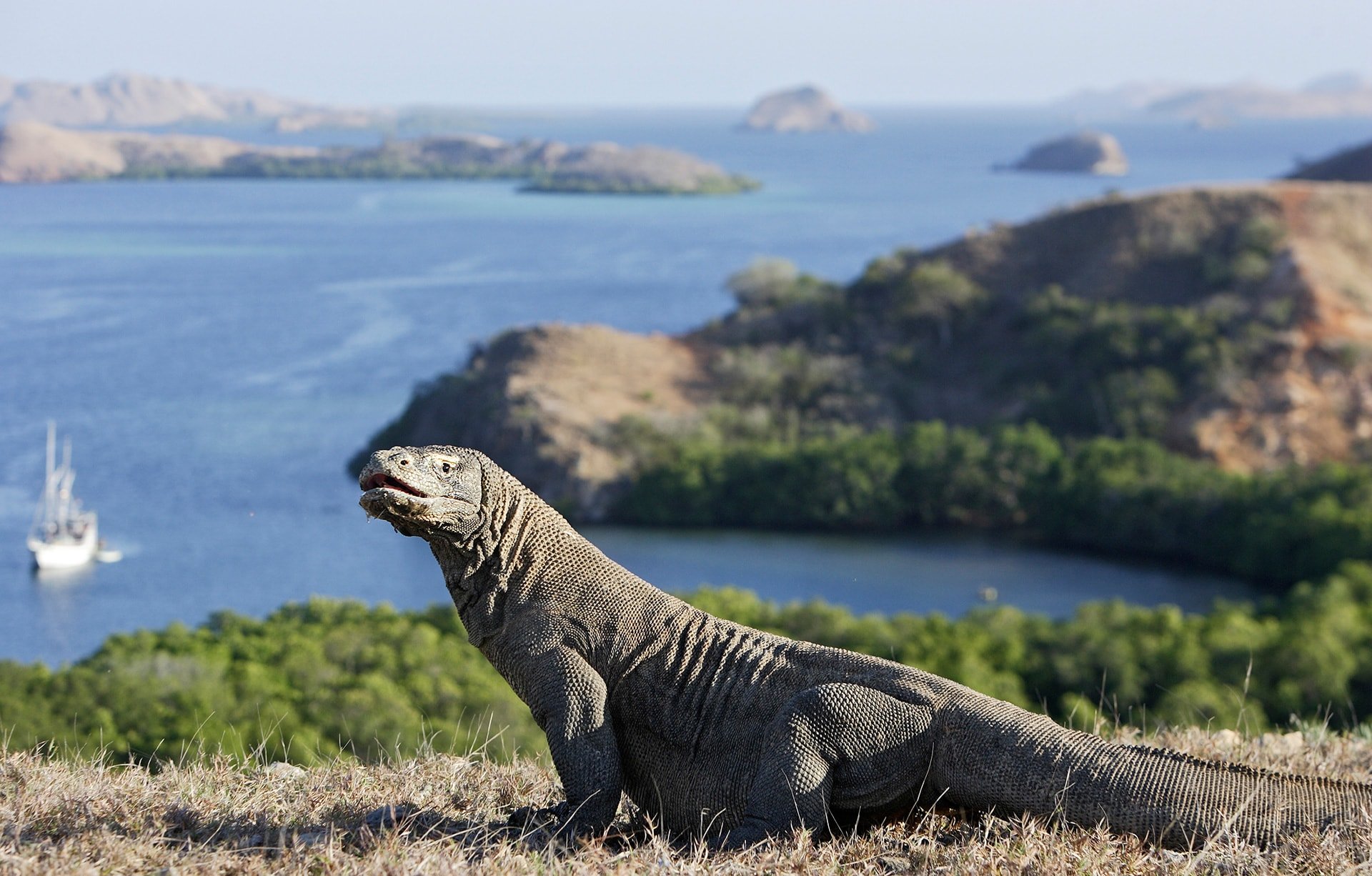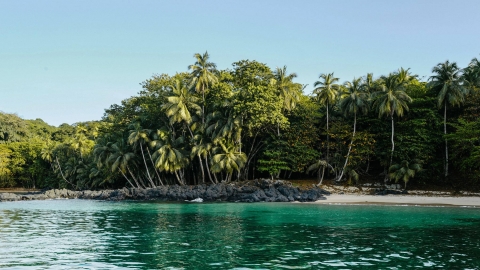Komodo National Park is located in the Indonesian Nusa Tenggara archipelago, on the border between the provinces of East Nusa Tenggara and West Nusa Tenggara. The park includes three large islands, Komodo, Padar and Rinca, and 26 smaller islands, with a total area of 1,733 km² (603 km² is land).

The islands are all volcanic in origin. The terrain is rugged and hilly, with elevations reaching 735 m. The climate is one of the driest in Indonesia, with annual rainfall ranging from 800 to 1,000 mm. The average temperature in the dry season (May-October) is around 40 °C.
Home to prehistoric creatures
Komodo National Park was established in 1980 with the original purpose of protecting the Komodo Dragon, the world's only surviving prehistoric lizard species. This land dragon currently lives only on the Indonesian islands of Komodo, Rinca, Gili Motang, and Nusa Kode in the wild. They are closely related to the extinct dinosaurs that lived millions of years ago...
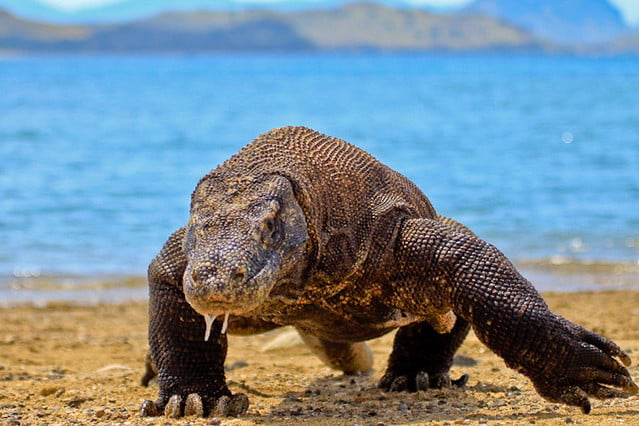
First discovered in the world in 1910 on Komodo Island (Indonesia), the Komodo dragon has the scientific name "Varanus komodoensis" and belongs to the family Varanidae. It is one of the largest lizards in the world, reaching a length of up to 3 m and weighing over 160 kg.
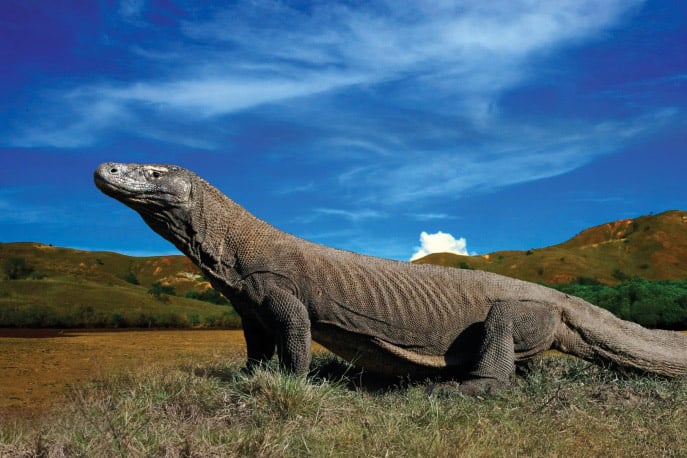
Komodo dragons have an average lifespan of 30 years but can live up to 50 years. They typically take 3-5 years to reach maturity and reach sexual maturity at 8-9 years of age. Breeding season for Komodo dragons is usually in September.
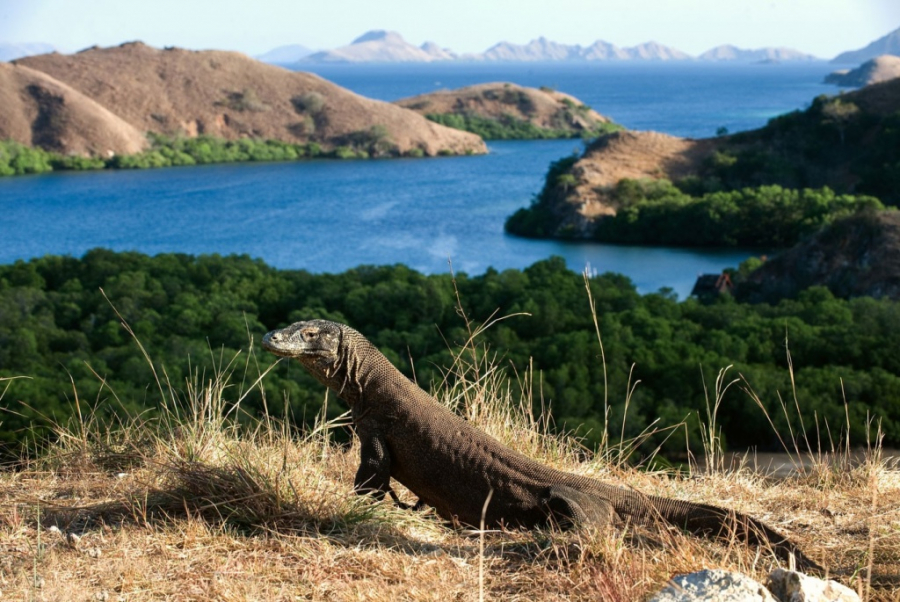
Like other cold-blooded reptiles, Komodo dragons often minimize activities to conserve energy, but when needed, they can still exert all their strength to increase their speed up to 20 km/h when hunting or running away from enemies. Komodo dragons are very good at swimming, can dive 4-5 m deep to hunt prey and also have the ability to climb quite professionally thanks to their very sharp and strong claws.
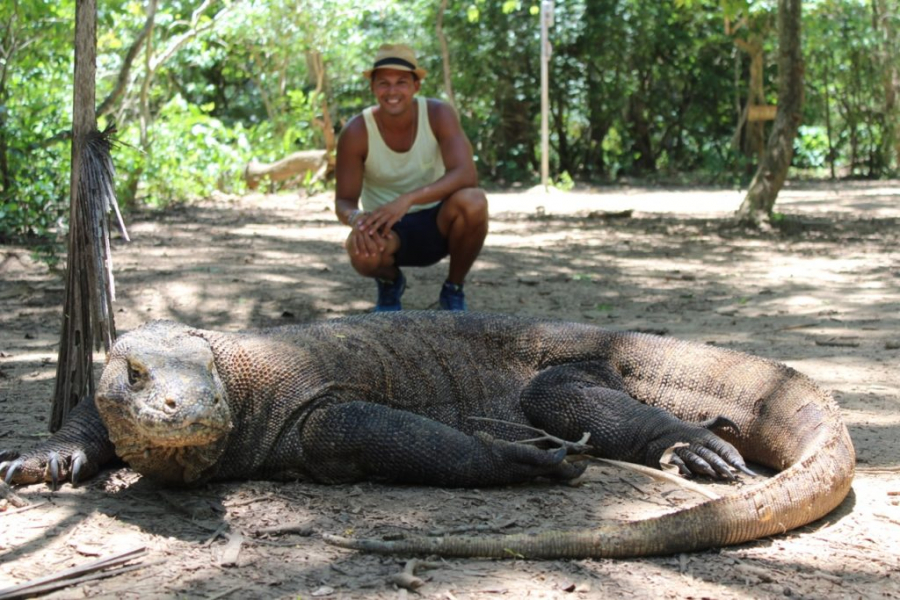
They are listed as endangered species and are extremely dangerous predators. Therefore, security when entering the National Park is tightened, both to ensure the habitat for wild animals and to protect the safety of tourists.
The beauty of wild nature

Besides the Komondo dragon, the National Park also protects thousands of rare species of flora and fauna. There are more than 260 species of coral and new reefs are still being created; 70 different species of sponges, crustaceans, cartilaginous animals including rays and sharks; more than 1,000 species of bony fish, marine reptiles including sea turtles, mammals such as dugongs, whales (14 species), dolphins, dugongs, etc.

There are not many terrestrial animals, including some rare species such as Timor deer, endemic Rinca forest rats, orange-footed chickens, long-tailed macaques, fruit bats, civets, wild horses, buffalo, wild boars... and some dangerous reptiles such as cobras, Russell's vipers... According to records, most mammals are of Asian origin, some reptiles and birds are of Australian origin.
Here, visitors can participate in activities such as diving to see corals, swimming with dolphins, sharks... Other famous diving spots include Batu Bolong and Tatawa islands, where you can even find white tip sharks and beautiful coral gardens.
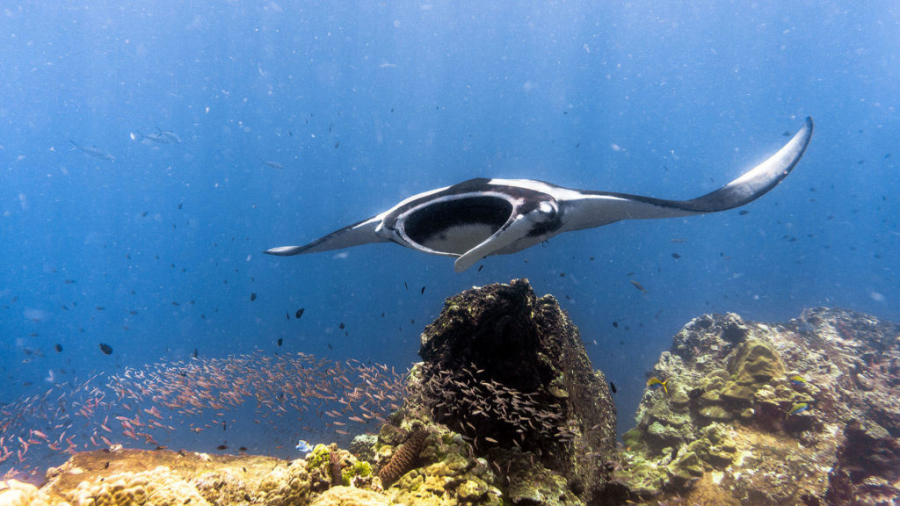
Padar Island is also an interesting destination within the Komodo National Park. The island was formed from an inactive volcano in the middle of the ocean. Therefore, it has a mysterious and majestic beauty. The most special experience is walking and taking pictures on the "dinosaur spine" - the mountain running straight out to the vast blue sea.

Gili Laba is the name of a small island in Komodo National Park. With its terrain of rolling hills, this place is an ideal place for mountain climbing activities.






